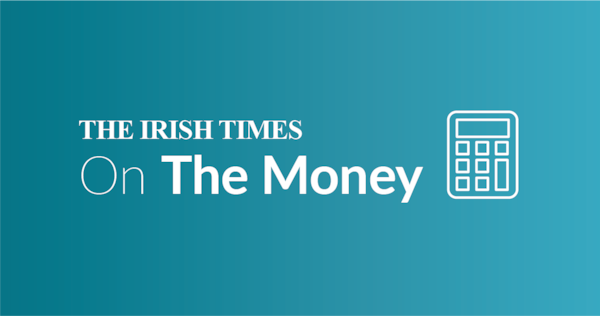Many households feel they pay too much tax and get too little back in return in terms of State services. But what kind of “deal” do the public actually get from the Irish Government? In terms of what tax we pay and what Irish people benefit from in terms of Government spending, new research from the Fiscal Advisory Council, the budget watchdog, written by economist Niall Conroy, provides new pointers.
1. Boston or Berlin? The overall picture is that both tax and State spending are relatively low here by the standards of other richer EU countries. However, in terms of the numbers, Ireland sits between the high spending levels of higher-income European countries- used as comparators throughout the study – and the lower spending US. In 2000, then tánaiste Mary Harney opined that Ireland was spiritually closer to Boston than Berlin. In terms of spending and tax levels, the headline figures suggest we remain closer to other English-speaking countries, but even more so to the UK and Canada than the US – you could say more Bristol, Bolton or British Columbia than Boston or Berlin.
Government spending here, at around 40 per cent of national output (using adjusted gross national income or GNI* for Ireland to remove multinational distortions) is well below the 49 per cent in the dozen other richer EU countries. However, part of this is due to demographics and a strong economy, both of which mean Government spending is a bit lower.
More than 60 per cent of this gap is accounted for by the younger age profile of the Irish population and the stronger economic growth rates here. And so we are a bit closer to European spending levels than it looks at first glance.
RM Block
However, even accounting for this, the spending gap between Ireland and the richer European group is still around €1,800 per person. (The group used to compare us to includes Austria, Belgium, Denmark, Finland, France, Germany, Italy, Netherlands, Norway, Portugal, Spain and Sweden).
But while State spending here is lower, so too are taxes. The tax “gap” is around €2,600 per person. The IFAC paper points out that this includes what it classifies as “excess” levels of corporation tax due to multinational planning, which boosts the Irish coffers. Excluding these windfall receipts, the gap rises to €4,700 per annum, on IFAC calculations.
So on the face of it Ireland is a lower tax/lower spend economy than many other high income European countries. But as the population ages, Irish spending will inevitably rise – particularly in areas like pensions, health and social care. This may move Ireland close to a European model but with key policy decisions to make.
2. How does what Irish people pay in tax compare?: Government revenues in Ireland are towards the bottom of the European league – as a percentage of national income. The tax “gap” here, compared to an average of other high-income European countries, is calculated at 4.7 per cent of national income, or €2,600 per person. Looking beyond Europe, Ireland’s tax share is more in line with countries like the UK, Canada, Australia and New Zealand, but still higher than the US.
So how come many households still feel they are paying a lot of tax? There are reasons.
The biggest gap between Ireland and other higher-income European countries is the lower levels of tax on income here. But two things are worth noting. Irish people pay similar levels of income tax on average as the European comparator group, but much lower levels of social security, or PRSI in the Irish context, is paid by both employers and employees.
The relatively young age of the population may be a factor here – and more PRSI may need to be collected in future to support a rising State pensions bill. An important point when comparing social contributions is that what really matters is not just what you pay, but also what you get in return in terms of services. In some European countries this includes, for example, better healthcare services.
The second key point is that the low level of taxes on income here “is driven entirely by lower-income households” who face low effective rates, according to the paper, particularly if they have children.
The paper adds: “In contrast, higher earners in Ireland face similar combined rates of income tax and social contributions as those in other high-income European countries.”
OECD data show that a low earning household in Ireland (on less than €50,000) pays combined tax and social security of about 17.8 per cent of income, compared to a European average of 23.4 per cent. An average earning household (earning just over €70,000) pays around the same as other better off EU countries at around 28-29 per cent while a higher earner here (€118,000) pays a bit more – 37.2 per cent versus 36.4 per cent.
So if you are a middle or higher earner, you pay the same or a bit more than those in other rich European countries.
The other area where Ireland stands out, of course, is corporation tax, where Ireland collects roughly twice as much as other richer European countries in terms of share of national income. As the paper points out, this helps to support lower taxes and higher spending elsewhere – for as long as it lasts.
Looking at taxes on consumption – like VAT and excise – Ireland has traditionally levied more. These days, however, the State is slightly below the European average due to decreasing revenues – as a percentage of the total – from excises on alcohol, tobacco and petrol.
3. What about the services the public receive, paid for by their taxes? The paper looks at key services accessed by the public and again compares Ireland with other richer European countries. This is vital, too, for living standards.
It is easy enough to measure spending here in areas like health and education and compare it with other countries. But comparing the actual services people receive is more complicated, depending on the structure and efficiency of what is delivered. However, the paper makes some interesting points.
In education, it finds that Ireland spends its money relatively efficiently. After adjusting for Ireland’s relatively young population, the paper finds that Ireland spends a bit below the average of other richer European countries in this area. But, despite this, Ireland’s level of overall educational attainment is high, ranking below only Finland. And Ireland has the highest proportion of the population with a third-level degree.
Ireland also scores well in standardised tests in areas like reading, science and maths. In other words, Ireland gets good outcomes from a relatively low spend.
In healthcare, the picture is different. Ireland is a high spender, particularly when adjustment is made for the young population – and insurance-funded spending is also higher here. Ireland does have good health “outcomes” in terms of life expectancy and population health, but key pressure points in accident and emergency services and in public waiting lists remain.
The paper asks whether better value is needed from the money spent, with the cost of delivering services having soared in recent years.
Looking at pensions, Ireland spends less than other richer European countries, even when adjustment is made for the younger population. Irish pension payments- while they rose during the 2000 to 2010 era – remain lower than the European average. A key point here is that Ireland’s state pension is not linked to inflation, as it is in most other countries.
In childcare and family social protection, meanwhile, Ireland has a lower level of spending – again adjusted for the population. However, cash transfers to families are higher here.
Where Ireland falls behind is that, in most other countries, the State plays a bigger role in investing in and providing childcare services.
4. The policy questions: The vital policy question is that the population is ageing and revenues will be needed to pay the higher bills that will come with that in areas like healthcare and pensions in particular.
On the other side of the exchequer equation, Ireland is increasingly reliant on corporate tax revenues, which are potentially volatile. Meanwhile, spending is rising rapidly, though the result in terms of better services to the public is mixed. The Government is working on a medium-term financial strategy for the autumn and thus has much to grapple with, most importantly how to pay the bills coming down the road.














